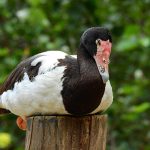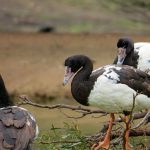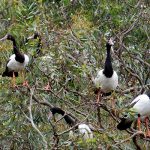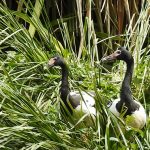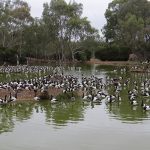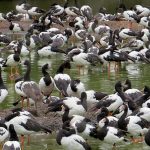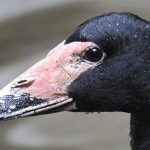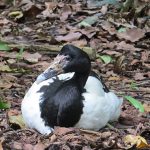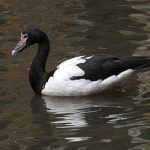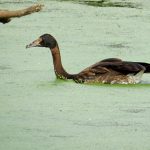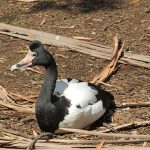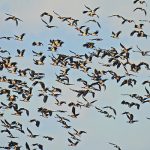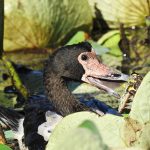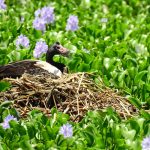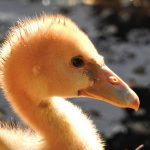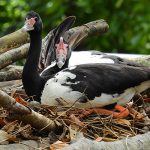MAGPIE GOOSE
The Magpie Goose is a unique waterbird species found in northern Australia, Papua New Guinea, and the islands of Aru and Seram in Indonesia. It is the sole living member of the family Anseranatidae and is distinct from other geese due to its unusual appearance and behavior.
The Magpie Goose has a striking black and white plumage, which resembles the coloration of magpies, giving it its name. It has a long neck, a sturdy body, and relatively short legs. The feet are partially webbed (hence the species name “semipalmata”), which helps them swim and move through marshy habitats. Adults typically measure around 75 to 100 cm in length.
These geese prefer to inhabit wetlands, swamps, and freshwater habitats such as billabongs, floodplains, and lagoons. They are social birds and are often found in large flocks, especially during the non-breeding season when they gather in significant numbers.
Magpie Geese are primarily herbivorous, feeding on aquatic plants, grasses, and seeds.
Breeding usually occurs during the wet season when rainfall and water availability are higher. They construct large, elevated nest platforms using vegetation and sticks, usually located above the water to protect the eggs from predators. Clutches generally consist of 5 to 14 eggs.
The Magpie Goose holds ecological significance in its native wetland habitats. Its significance stems from its feeding behavior, nesting habits, and interactions with the wetland ecosystem. As herbivores, Magpie Geese feed on aquatic plants, grasses, and seeds. By consuming seeds and other plant material, they help disperse seeds throughout their wetland habitats. This dispersal contributes to the maintenance and regeneration of plant communities, enhancing the biodiversity of the ecosystem.
Magpie Geese construct large, elevated nest platforms using vegetation and sticks. These nests are often built in trees or tall shrubs above the water, providing nesting sites for other bird species. The creation of these nesting sites by Magpie Geese can influence the distribution and abundance of other bird populations within the wetland areas.
Wetland habitats are essential for nutrient cycling, and Magpie Geese contribute to this process through their feeding activities. The nutrients present in the plants they consume are assimilated into their bodies, and when they defecate, these nutrients are returned to the wetland ecosystem, enriching the soil and supporting the growth of aquatic vegetation.
As a species specialized for wetland habitats, the presence and abundance of Magpie Geese can act as an indicator of the overall health and condition of these ecosystems. Their population dynamics and distribution patterns can provide valuable insights into the ecological well-being of wetlands.
In some indigenous cultures, the Magpie Goose holds cultural and traditional significance, further highlighting its connection to human communities living in wetland areas.
As prey for various predators in the wetland ecosystem, including crocodiles, birds of prey, and large snakes, the Magpie Goose serves as an important link in the food web. Its presence helps support the predator populations and contributes to the overall balance of the ecosystem.
Overall, the Magpie Goose’s presence and activities in native wetland habitats contribute to the overall health, diversity, and functioning of these ecosystems. Protecting this unique waterbird and its habitats is crucial for maintaining the delicate balance of wetland environments and the myriad species that depend on them for survival.

